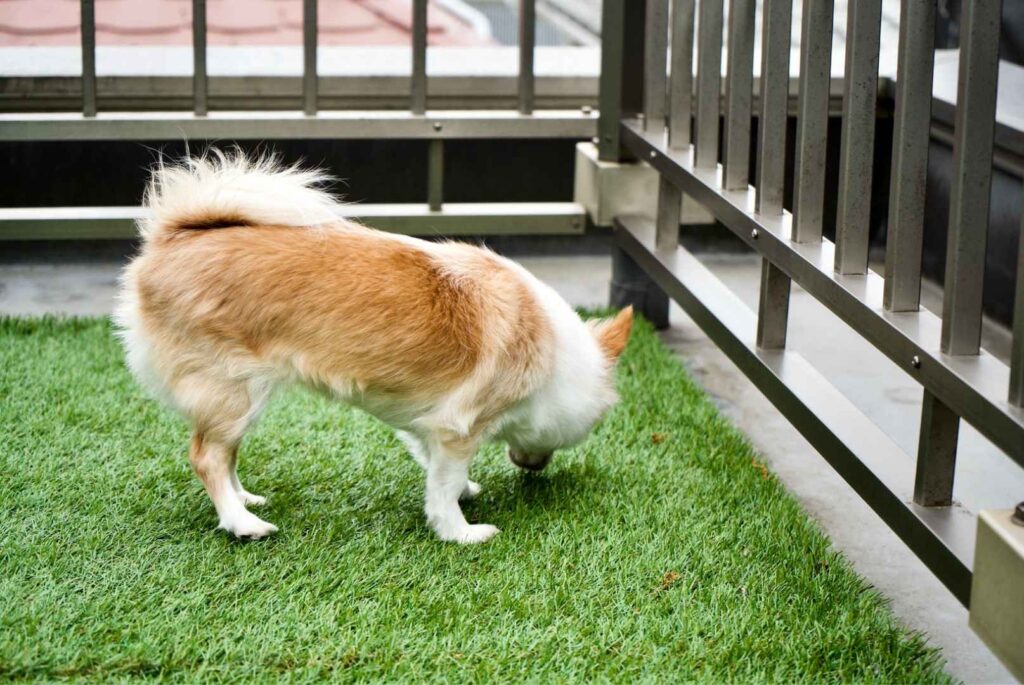Artificial grass has become increasingly popular in Australian homes and businesses, offering a lush, green lawn without the hassle of constant mowing and watering. However, to keep your synthetic turf looking its best, regular cleaning and maintenance are essential.
As a trusted leader in the artificial turf industry, Artificial Grass Gold Coast takes pride in delivering the best artificial grass installations that not only meet your aesthetic expectations but are also built to last.
This comprehensive guide will walk you through how to clean artificial grass? with the simple steps of cleaning your synthetic grass and addressing common issues.

Table of Contents
Toggle
What is Artificial Grass?
Artificial grass, also known as synthetic turf, grass is made from synthetic fibres, grass is designed synthetic lawn to look like natural grass. It’s used in residential gardens, sports fields, and commercial landscapes, providing a low-maintenance alternative to natural lawns.
Before you install artificial grass, it’s essential to understand that maintaining it will still require some upkeep, though far less than natural grass lawn. You should be aware of the cleaning process to keep grass beautiful all year-round.
7-Steps How To Clean Artificial Grass?
Cleaning your artificial grass doesn’t have to be difficult. By following these simple steps process, you can ensure your lawn clean, soft, and free of debris.
Step 1 – Sweep the grass
Begin by using a stiff-bristled broom or rake to remove loose debris and fluff up the grass fibres. This step helps prevent matting and improves the overall appearance of your turf.
Step 2 – Remove Surface Dirt And Dust
Use a leaf blower or vacuum cleaner to remove any remaining dust, dirt, or small particles from the surface of the grass.
Step 3 – Prepare Cleaning Solution
Mix a mild detergent with warm water in a bucket. Optionally, you can also use a mixture of water and vinegar. Avoid using harsh chemicals or bleach, as these can damage the synthetic grass fibres.
Step 4 – Wet the Turf
Use a garden hose to lightly wet the entire area of artificial grass. This will help the solution penetrate more effectively.
Step 5 – Apply Cleaner Solution
Apply the cleaning solution to the grass using a soft-bristled brush or mop. Work in small sections, gently scrubbing to remove any stubborn dirt or stains.
Step 6 – Rinse the Grass
Thoroughly rinse the grass with clean water from your garden hose, ensuring all soap residue is removed.
Step 7 – Let Air Dry
Allow the artificial grass to air dry completely. Avoid walking on the wet surface to prevent matting of the fibres.
Addressing Specific
While general maintenance covers most of your cleaning needs, some issues require specific attention. Here’s how to tackle common problems with artificial grass:

Dog Urine
Regularly wash areas where pets urinate with water to dilute and flush away the urine. To prevent the urine odours, apply a pet-friendly enzymatic cleaner specifically designed for artificial grass.
Pet Waste
When your pet leaves solid waste on the artificial grass, it’s important to clean pet waste it up as soon as possible. First, use a scoop, plastic bag, or pooper-scooper to remove the waste. After removal, wash the area thoroughly with water to wash away any residue. For a deeper clean and to eliminate bacteria and odours, apply a pet-safe enzymatic cleaner or a mild detergent mixed with water. Gently scrub the area and wash again to ensure the cleaner has been fully removed.
Stain Removal
For tough stains, use a mixture of white vinegar and water. Apply the solution to the stained area, let it sit for a few minutes, then wash thoroughly.
Food and Beverage Spills
Clean spills immediately by blotting with a clean cloth or paper towel. For sticky residues, use a mild soap solution and wash out well.
Mold or Algae
Mix equal parts water and white vinegar, apply to the affected area, scrub gently, and rinse thoroughly. For persistent issues, consider using a specialised artificial grass cleaner.
Chemical Spills
If chemicals are spilled on your artificial grass, wash the area immediately with copious amounts of water. For serious spills, consult a professional.
Removing Leaves and Other Debris
Use a leaf blower, rake, or broom to remove fallen leaves and other organic debris regularly to prevent decomposition on your artificial lawn.
Artificial Grass Maintenance
Maintaining artificial grass is easier than real grass, but it still requires attention to keep it in top condition. Regular maintance helps prevent the build-up of dirt and grime, ensuring your synthetic turf remains lush and vibrant.
Regular Cleaning
In high-traffic areas, you may need to rinse your artificial grass weekly to keep it free of dust, dirt, and debris. For deeper cleaning, follow the 7-step process once a month to maintain the appearance and longevity of your turf.

Weekly Artificial Turf Maintenance
- Remove leaves and debris
- Rinse high-traffic areas
- Check for and address any small stains or spills
Monthly Artificial Grass Maintenance
- Conduct a deep clean using the 7-step process
- Inspect for any damage or wear
- Brush the grass to maintain its upright position
Conclusion
With proper care, your artificial grass can remain beautiful and functional for years to come. Regular cleaning not only keeps your lawn looking great but also extends its lifespan, ensuring you get the most value from your investment. Whether it’s addressing pet odours, removing stains, or keeping debris at bay, following the simple steps in this guide will keep your artificial grass in peak condition.
If you’re still in the planning phase, read our guide on how to lay artificial grass to ensure a smooth installation and long-lasting results.
People Also Ask
What is the best way to clean artificial grass?
The best way to clean artificial turf is to follow the 7-step process outlined above, which includes sweeping, removing surface dirt, applying a mild cleaning solution, rinsing, and allowing the grass to air dry.
Is Artificial Grass good for dogs and children?
Yes, artificial grass can be an excellent option for homes with dogs and children. It’s durable, easy to clean, and provides a safe surface for play. However, cleaning is essential, especially in areas where pets relieve themselves.
How do you get rid of pet urine smell on artificial grass?
To eliminate pet urine odours, rinse the area thoroughly with water and use an enzymatic cleaner designed for artificial grass. Regular rinsing after your pet urinates can help prevent odour build-up.
How long does fake grass last?
With proper maintenance, artificial grass can last 15-20 years or more. The lifespan depends on factors such as usage, quality of installation, and cleaning and maintenance.
Will bleach damage artificial grass?
Yes, bleach can damage artificial grass by discolouring the fibres and breaking down the materials. It’s best to avoid using bleach and opt for mild, pH-neutral solutions instead.
Can you power wash artificial grass?
While power washing can be effective for cleaning artificial grass, it should be done with caution. Use a low-pressure setting and keep the nozzle at least 30cm away from the surface to avoid damaging the fibres or disturbing the infill.
Remember, the key to maintaining a beautiful artificial grass lawn is regular care and prompt attention to spills and stains. With these tips, keep your grass can always be greener!
